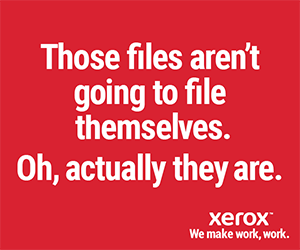
By Dr. Sunny Malhotra, Cardiologist & Founder of Robotic Process Automation Holdings
Healthcare administration costs make up about 13 percent, or $496 billion, of total national healthcare expenditures (approximately $3.8 trillion dollars) in the U.S.1,2 These numbers reflect the total addressable market but do not take into account the potential value creation from robotic process automation (RPA), intelligent automation (IA) and “connected care.”
RPA market leaders will need a healthcare sector strategy to maintain their position as these sectors become more saturated. The winner of this market has the potential to stake its claim on a growing private and public sector SLED/Federal GDP expense (approximately 15 percent).3
Healthcare RPA Market Opportunity
Despite initial strides made through RPA implementation in healthcare, we have only seen a 12 percent penetration in the total addressable market. Progress has been made in clinical and non-clinical uses including revenue cycle management, credentialing, claims processing, enrollment and billing, and corporate human resources utilization, which have supported the cumulative 40 percent annual growth rate in the RPA market.4
RPA adoption is being led by large enterprises (primarily in the banking, financial service and insurance sectors, which account for 46 percent of the total spent on RPA). In an effort to streamline business processes, more CIOs are turning to RPA. KPMG estimates the value of the global IT robotic automation market to reach roughly $5 billion this year.
RPA and Intelligent Automation
The healthcare RPA sector will be the conduit to the next level of automation, which includes intelligent automation and connected care. Intelligent automation is a reflection of a connection between artificial intelligence and RPA. Integration with convolutional neural networks for image analysis and recurrent neural networks for Natural Language Processing has widespread use cases in reducing healthcare costs, improved outcomes and increased productivity. The healthcare sector is being rewarded for value-based care by Payors.
Intelligent Automation Use Cases
RPA can be integrated into AI technologies, including image analysis, voice recognition, and language processing. RPA can convert unstructured data into structured data for AI algorithms to bring inputs into their neural networks and utilize outputs for their workflows. RPA with AI can then automate more complex processes within legacy systems and these “digital employees” can carry out tasks that would otherwise consume valuable time.
Intelligent automation can work on top of existing software layers to identify patients who could benefit from chronic disease screenings, coordinate referrals, and extract relevant data from programs. Programs like these can screen for value-based care incentive reimbursements to provide better patient-provider care. Incorporating RPA tools with AI can streamline work across collective human and robotic teams when demand fluctuates, thus allowing for continuous improvement of performance. Healthcare organizations and agencies (e.g., Health and Human Services, Veteran Affairs, NIH, Centers for Medicare and Medicaid Services) can utilize these interoperable and scalable solutions while offering efficient transfer of patient health information between systems.
RPA can restructure clinical care by automating the process of preloading consent statements, patient pre-registration information forms, insurance eligibility verification, claim processing, accessing payer portals, the release of information requests, and fax-based processes. Automating these tasks can save time, reduce waste and improve healthcare resource utilization.
Connected Care
“Connected care” is an interoperable solution designed to integrate patient care with UIPath + Druid chatbot solutions (i.e., contact center automation). It is personalized to each patient’s individual needs and goals via RPA managed task work. Connected care can provide solutions before clinical care delivery, during clinical care and after care has been delivered. Internet of things hardware and remote patient monitoring have become reimburseable practice revenue generators to manage patients from home. Vitals monitoring technologies capture information about the patient clinical status during treatments and recovery and can be turned into actionable data through real-time RPA integrations while also allowing for future predictive analytics at a fraction of the typical solution costs.
Healthcare systems in the private and public sector will need to implement an RPA strategy to achieve the holy grail (the “quadruple aim” comprising improved clinician experience, better clinical outcomes, lower healthcare costs, and improved patient experience).
From a physician and technologist perspective, process automation saves administrative staff and providers time, which they can use to focus on patient needs, and reduces burnout. From a patient’s perspective, RPA offers time savings and improvement in the quality of care. The future of RPA will be dictated by growth into the untapped healthcare sector potential and the evolution of existing tools to new use cases.
- https://www.healthaffairs.org/do/10.1377/hblog20200218.375060/full/
- Gee E, Spiro T, Excess administrative costs burden the US Health Care System. 2019; and, Centers for Medicare and Medicaid Services, National Health Expenditure Data, 2019.
- https://datalab.usaspending.gov/americas-finance-guide/spending/categories/
- https://www.uipath.com/resources/covid-automations/accelerating-c-19-testing
If you liked this article, please sign up to RPA Today! Registrants will receive our free weekly RPA newsletter updating you on the most recent developments in the Robotic Process Automation, Intelligent Automation and AI space. In addition to news updates, we will also provide feature articles (like this one) with a more in-depth examination of RPA issues for end users and their enterprises.


